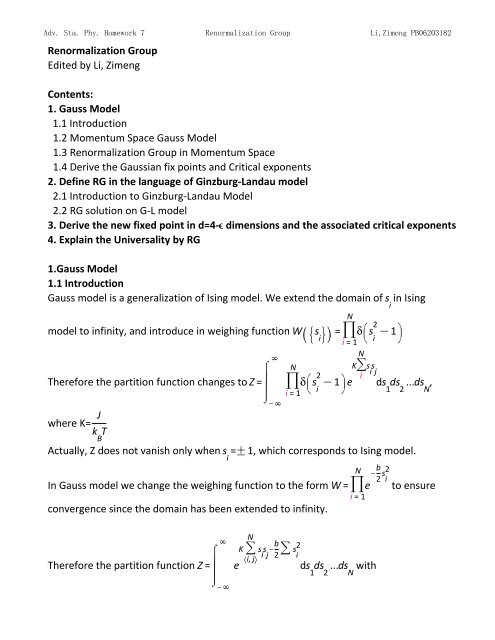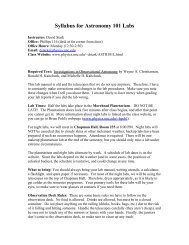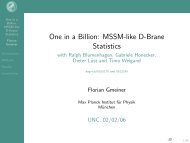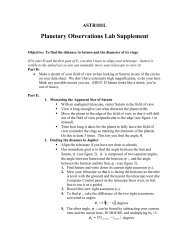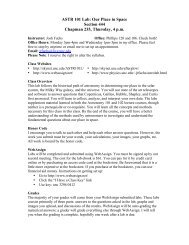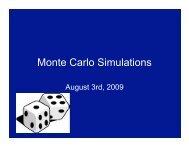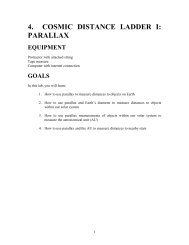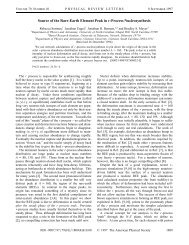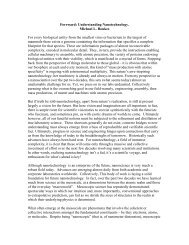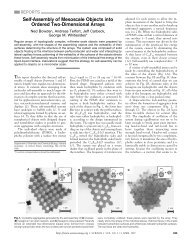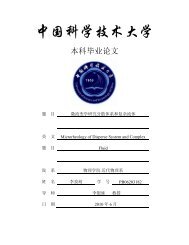Topics in Statistic Mechanics
Topics in Statistic Mechanics
Topics in Statistic Mechanics
You also want an ePaper? Increase the reach of your titles
YUMPU automatically turns print PDFs into web optimized ePapers that Google loves.
Adv. Sta. Phy. Homework 7 Renormalization Group Li,Zimeng PB06203182<br />
Renormalization Group<br />
Edited by Li, Zimeng<br />
Contents:<br />
1. Gauss Model<br />
1.1 Introduction<br />
1.2 Momentum Space Gauss Model<br />
1.3 Renormalization Group <strong>in</strong> Momentum Space<br />
1.4 Derive the Gaussian fix po<strong>in</strong>ts and Critical exponents<br />
2. Def<strong>in</strong>e RG <strong>in</strong> the language of G<strong>in</strong>zburg-Landau model<br />
2.1 Introduction to G<strong>in</strong>zburg-Landau Model<br />
2.2 RG solution on G-L model<br />
3. Derive the new fixed po<strong>in</strong>t <strong>in</strong> d=4- dimensions and the associated critical exponents<br />
4. Expla<strong>in</strong> the Universality by RG<br />
1.Gauss Model<br />
1.1 Introduction<br />
Gauss model is a generalization of Is<strong>in</strong>g model. We extend the doma<strong>in</strong> of<br />
<strong>in</strong> Is<strong>in</strong>g<br />
model to <strong>in</strong>f<strong>in</strong>ity, and <strong>in</strong>troduce <strong>in</strong> weigh<strong>in</strong>g function<br />
Therefore the partition function changes to ,<br />
where K=<br />
Actually, Z does not vanish only when<br />
, which corresponds to Is<strong>in</strong>g model.<br />
In Gauss model we change the weigh<strong>in</strong>g function to the form<br />
to ensure<br />
convergence s<strong>in</strong>ce the doma<strong>in</strong> has been extended to <strong>in</strong>f<strong>in</strong>ity.<br />
Therefore the partition function<br />
with


